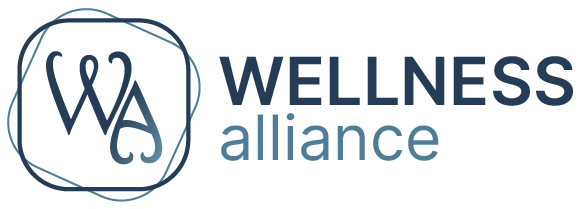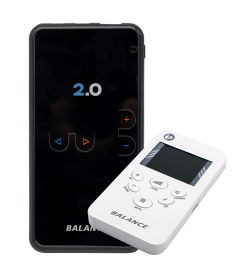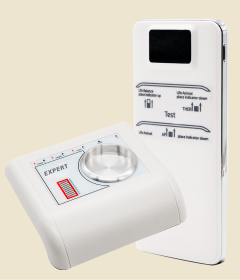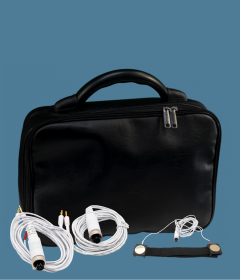Electroacupuncture according to Voll
This is one of the most well-known methods utilized used by professionals specialized in this area. From an overall point of view, it is an approach encompassing the knowledge and use of modern electronics as well as initial case history in combination with:
1. traditional Chinese acupuncture
2. homeopathy
3. allopathic medicine
4. orthomolecular medicine.
The method of electropuncture has appeared as a fusion of the traditional Chinese acupuncture and technological capabilities of the XX century.
Acupuncture method has been used by Chinese physicians for over 3,000 years. When literally translated, this term means “acu” - needle and “puncture” - point. The method is also known as needle therapy. Thus, electropuncture is a method (both diagnostic and therapeutic) using Chinese acupuncture points, though instead of needles it involves specific electrodes for reading data or for therapeutic treatment.
In the West it is in France where the traditional Chinese acupuncture has become most popular and is recognized as an official therapeutic method being taught in some universities. So, unsurprisingly, France has also become the birthplace of electropuncture, where Dr. De La Fui designed the first device utilising this method and designated it as ‘electroacupuncture’. This device though didn’t gain wide popularity. And De La Fui died in 1956, with his work carried on by Nyobe, a researcher who revealed that Chinese acupuncture points had lower resistance to direct current than surrounding tissues, and Schmidt who related electric conductivity of points to pathological changes in associated organs. It is Schmidt who was the first to reveal the phenomenon of the indicator drop. In 1953 he announced the results of his research in his report named ‘Measurement of vegetative potentials in points on meridians’ at a meeting dedicated to experimental medicine.
The birthplace of R. Voll’s method which is one of the most widespread in electropuncture, is Germany. To designate this method some German colleagues and adherents of the author use the term of electroacupuncture which is not strictly correct. Electroacupuncture should be called (and is called) a method where a small electric current is passed through acupuncture needles. This technique is usually used, quite successfully, for anesthesia (pain control) in surgeries. All of this should be borne in mind when citing or referring to German resources on this subject.
Between 1930 and 1935 Reinhold Voll studied at the University of Tübingen, after graduation he defended his thesis at the University of Tropical Medicine. From 1939 he started using electropuncture in his practice and in 1953 together with F. Werner, an engineer, he started developing his own method. Werner then manufactured the first device to work in conjunction with the Voll method. Initially, it was called ‘electropuncteur’ and then changed to ‘KuF Universal Diatherapuncteur’ soon after.
In 1955 R. Voll founded the International Society of Electroacupuncture.
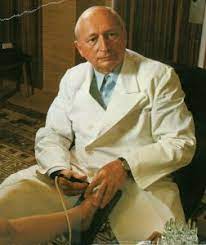
Dr. R. Voll
Dr. R. Voll’s opponents chose their own way under the leadership of Dr. Schmidt and Dr. Fil and in 1968 they organized an independent Experimental Association for Bioelectrical Functional diagnosis and Therapy – BFD. The main difference between Dr. R. Voll’s advocates and BFD supporters was the following: BFD considered meaningful not the absolute value obtained during measurements, but the dynamics of its changes produced by load. In the future, the followers of both methods went their own ways.
The discovery of electropuncture testing by Dr. Voll in 1954 was, perhaps, his major and most valuable contribution to electropuncture. During his scientific research together with Dr. M. Glazer-Turk they unexpectedly noticed that medications placed near acupuncture points could significantly change their electrical parameters.
Later on, Dr. F. Morell discovered that medications improving electrical parameters of biologically active points (BAP), when administered in the body, reduced the erythrocyte sedimentation rate (ESR) from 40 to 20 mm per hour even within 15-20 minutes.
The obtained data became a foundation of development of a new approach in therapy, based on the individual selection of medications (their efficacy, compatibility and optimal dosage) before administering in the tested person’s body.
R. Voll founded the society of electroacupuncture, which in 1960 was transformed into the International Society of Electroacupuncture named after R. Voll (this organization still exists, moreover, its honorary members are leading doctors from 30 countries of the world).
For his great contribution to the modern medicine development R. Voll has repeatedly won the prestigious international awards: 1966 - the Vatican's Gold Medal "For Outstanding Achievements to the Suffering Mankind and the Development of a New Method": 1974 - Honorary Award of the German Democratic Republic - Hufeland Medal; 1979 - the Order of Achievements for the Federal Republic of Germany.
Reinhold Voll died in 1989 in the town of Plochingen (Germany). Despite the death of an outstanding doctor, the popularity of the method he created was growing from year to year.
Electroacupuncture according to Voll can be used to diagnose:
- Interfering fields whether from the teeth, scars, inflammation
- food intolerances
- metal allergies
- candidiasis
- parasitosis
- viral infection
- geopathic stress
- tissue poisoning
- deficiencies in vitamins, amino acids, oligo elements, fatty acids
At the present time, the International Society of Electroacupuncture includes 50 thousand doctors-Vollists, who continue to develop and improve the method of Voll.
